 The tragic inferno that destroyed five high-rise apartment blocks in Hong Kong last month brought this story by László Krasznahorkai to mind. Unable to get images of the September 11, 2001 World Trade Center collapse out of his mind, a narrator struggles to find adequate language to come to terms with the event. He argues that the root cause was an “immeasurably vast” destructive power that arrived on earth simultaneously with mankind and releases itself in cycles of destruction and new beginnings Themes include the limitations of language in dealing with apocalyptic events, the cyclical nature of destruction and renewal. More…
The tragic inferno that destroyed five high-rise apartment blocks in Hong Kong last month brought this story by László Krasznahorkai to mind. Unable to get images of the September 11, 2001 World Trade Center collapse out of his mind, a narrator struggles to find adequate language to come to terms with the event. He argues that the root cause was an “immeasurably vast” destructive power that arrived on earth simultaneously with mankind and releases itself in cycles of destruction and new beginnings Themes include the limitations of language in dealing with apocalyptic events, the cyclical nature of destruction and renewal. More…
Category Archives: Quick Reads
The Spirit of Emulation
 This story by Fernando Sorrentino is a perfect example of the idiom “Keeping up with the Joneses”. A man living in a multi-story apartment building has an unusual pet… a Lycosa pampeana (Wolf spider). A neighbour who sees it is so impressed that the next day he proudly shows the man his new pet… a scorpion. Competition sets in and soon the building is awash with all sorts of exotic animals. As occupants try to out-do each other with larger and larger “pets”, things get seriously out of hand. Themes include vanity, rivalry, materialism. More…
This story by Fernando Sorrentino is a perfect example of the idiom “Keeping up with the Joneses”. A man living in a multi-story apartment building has an unusual pet… a Lycosa pampeana (Wolf spider). A neighbour who sees it is so impressed that the next day he proudly shows the man his new pet… a scorpion. Competition sets in and soon the building is awash with all sorts of exotic animals. As occupants try to out-do each other with larger and larger “pets”, things get seriously out of hand. Themes include vanity, rivalry, materialism. More…
The Teacher
 In this story by Catherine Lim, an English teacher frustrated by the lack of progress in one of his students misses vital clues that may indicate problems at home. He reads three compositions exhibiting poor grammar to a colleague. The first two, which describe her desire to become a nurse and help her family, express concerns about her father’s drinking and violent tendencies. In the third, which he misinterprets as being off topic, she describes her father as having become a cruel, violent “stranger” who continually beats her mother and herself. Themes include frustration, insensitivity, ambition, oppression, domestic violence, suicide. More…
In this story by Catherine Lim, an English teacher frustrated by the lack of progress in one of his students misses vital clues that may indicate problems at home. He reads three compositions exhibiting poor grammar to a colleague. The first two, which describe her desire to become a nurse and help her family, express concerns about her father’s drinking and violent tendencies. In the third, which he misinterprets as being off topic, she describes her father as having become a cruel, violent “stranger” who continually beats her mother and herself. Themes include frustration, insensitivity, ambition, oppression, domestic violence, suicide. More…
The Near Departed
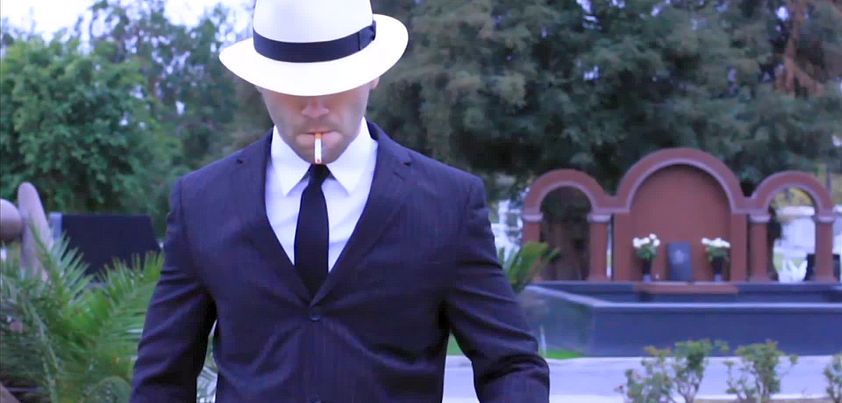 In this story by Richard Matheson, a man hides a sinister secret as he visits a mortician to arrange an elaborate funeral for his wife. He emphasises that cost is unimportant. “There’ll be many people,” he says. “Everybody loved her. She’s so beautiful. So young. She has to have the very best.” The mortician reassures him that he will be more than satisfied and, after completing the necessary paperwork, says his people will collect the body within the hour. As they part, the mortician asks the man a question which he pretends not to hear. Themes include marriage, death, dissimulation. More…
In this story by Richard Matheson, a man hides a sinister secret as he visits a mortician to arrange an elaborate funeral for his wife. He emphasises that cost is unimportant. “There’ll be many people,” he says. “Everybody loved her. She’s so beautiful. So young. She has to have the very best.” The mortician reassures him that he will be more than satisfied and, after completing the necessary paperwork, says his people will collect the body within the hour. As they part, the mortician asks the man a question which he pretends not to hear. Themes include marriage, death, dissimulation. More…
I’m Your Horse in the Night
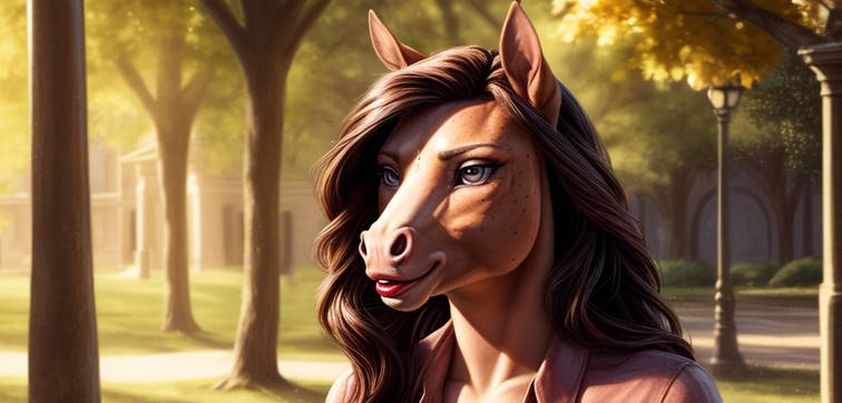 In this story by Luisa Valenzuela a woman describes a visit by her lover, an Argentinian resistance leader, after a mysterious six months’ absence. After a night of passionate lovemaking, when she wakes up he is gone. Arrested and tortured to divulge his whereabouts, she copes by telling herself the visit didn’t happen. She is so successful that by the end of the story she (and readers) are left wondering whether the visitor was real, a dream, or her dead lover’s spirit. Themes include love, sexuality, gender roles, oppression, paranoia, violence, memory and imagination, the supernatural. More…
In this story by Luisa Valenzuela a woman describes a visit by her lover, an Argentinian resistance leader, after a mysterious six months’ absence. After a night of passionate lovemaking, when she wakes up he is gone. Arrested and tortured to divulge his whereabouts, she copes by telling herself the visit didn’t happen. She is so successful that by the end of the story she (and readers) are left wondering whether the visitor was real, a dream, or her dead lover’s spirit. Themes include love, sexuality, gender roles, oppression, paranoia, violence, memory and imagination, the supernatural. More…
A Work of Art
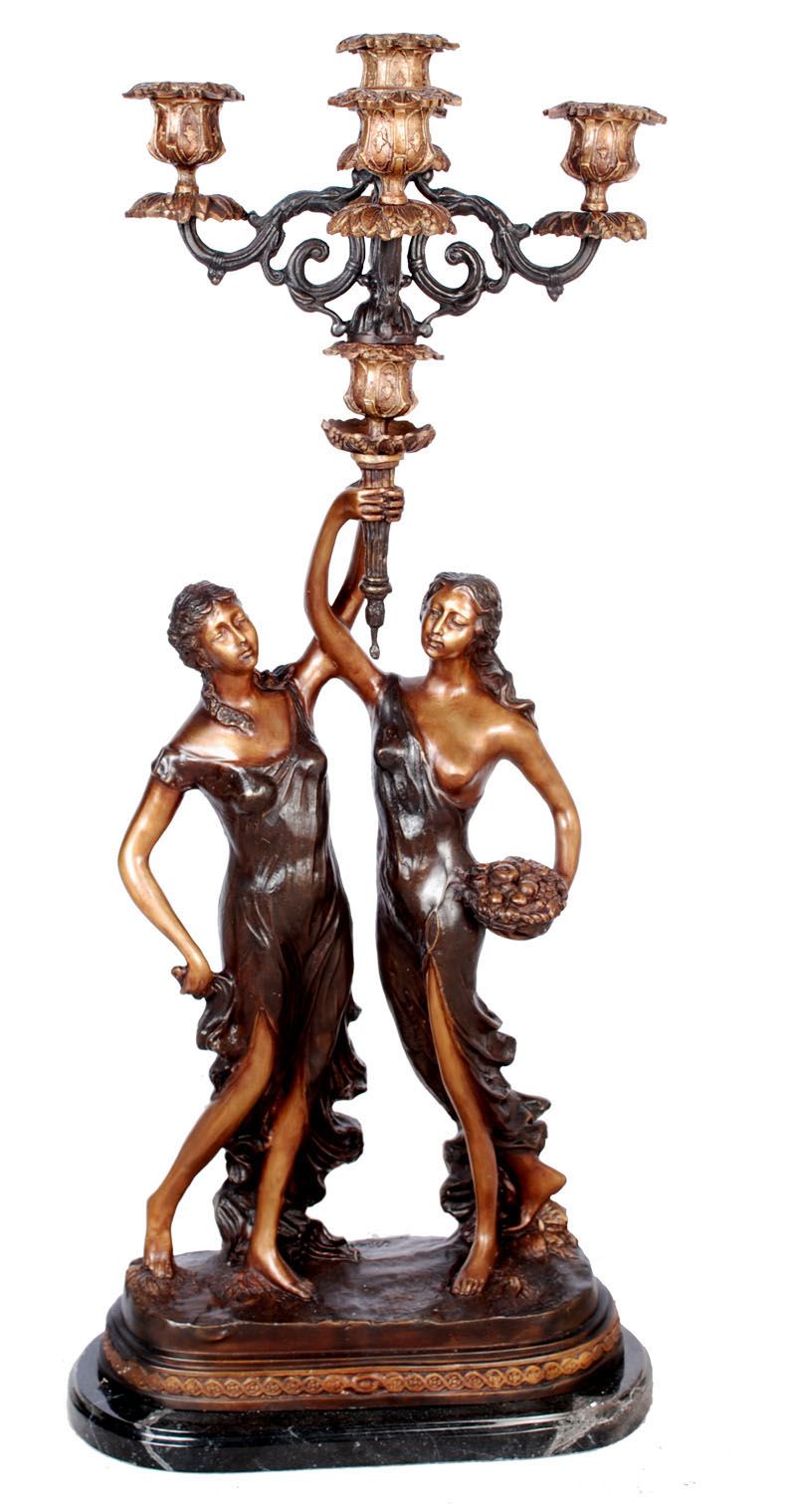 In this Anton Chekhov story the mother of a man too poor to pay for treatment sends his doctor a gift in gratitude for saving his life. There is only one problem: the gift, an antique bronze candelabra, features statuettes of two naked women in a not safe for work or home pose. The doctor passes it on as an unwelcome gift to his lawyer, who in turn donates it at a benefit for an aspiring comic actor. Unfortunately for the doctor, the actor decides to sell it. Themes include gratitude, perception (the subjectivity of art appreciation), morality, appearance, coincidence. More…
In this Anton Chekhov story the mother of a man too poor to pay for treatment sends his doctor a gift in gratitude for saving his life. There is only one problem: the gift, an antique bronze candelabra, features statuettes of two naked women in a not safe for work or home pose. The doctor passes it on as an unwelcome gift to his lawyer, who in turn donates it at a benefit for an aspiring comic actor. Unfortunately for the doctor, the actor decides to sell it. Themes include gratitude, perception (the subjectivity of art appreciation), morality, appearance, coincidence. More…
The Pose
 In this story by Anwar Khan, an attractive Indian college student makes a spur-of-the-moment decision to exchange places with a mannequin in a shop window. She feels an immediate sense of comfort in being able to watch passers-by without inhibition. Shortly afterwards, she realizes that she is as much an exhibit to them as they are to her. Thinking she is a mannequin, men and boys openly lust over her and women stop and admire her beauty. She leaves the shop empowered by the experience. Themes include identity, (repressive) social conventions, performance, liberation, self-discovery. empowerment. More…
In this story by Anwar Khan, an attractive Indian college student makes a spur-of-the-moment decision to exchange places with a mannequin in a shop window. She feels an immediate sense of comfort in being able to watch passers-by without inhibition. Shortly afterwards, she realizes that she is as much an exhibit to them as they are to her. Thinking she is a mannequin, men and boys openly lust over her and women stop and admire her beauty. She leaves the shop empowered by the experience. Themes include identity, (repressive) social conventions, performance, liberation, self-discovery. empowerment. More…
The Father
 This story by Bjørnstjerne Bjørnson opens with the wealthiest and most influential peasant in his parish asking for special treatment in the baptism of his son. He visits the priest on behalf of the boy on two subsequent occasions… to have him stand first in his confirmation, and to publish the banns for his marriage. Shortly after the last visit, his son drowns. A year later, the devasted and humbled man sells his farm, gives half to the church, and promises to do “something better”. Themes include pride (in seeking to elevate his status), loss, achieving humility through suffering. More…
This story by Bjørnstjerne Bjørnson opens with the wealthiest and most influential peasant in his parish asking for special treatment in the baptism of his son. He visits the priest on behalf of the boy on two subsequent occasions… to have him stand first in his confirmation, and to publish the banns for his marriage. Shortly after the last visit, his son drowns. A year later, the devasted and humbled man sells his farm, gives half to the church, and promises to do “something better”. Themes include pride (in seeking to elevate his status), loss, achieving humility through suffering. More…
Jaycee
 Frederic Brown is well known for the irreverence of some of his stories, but this one takes the cake. Scientists have discovered a way for women to asexually reproduce, allowing those who are single or have a sterile husband to have a family without the need for a sperm donation. Fifty million such children now exist, all of whom are males. The oldest has just reached puberty, and has started to exhibit behavior similar to the only previous virgin birth, which took place over 2,000 years ago. Themes include scientific hubris, the dangers of technology, unexpected consequences. More…
Frederic Brown is well known for the irreverence of some of his stories, but this one takes the cake. Scientists have discovered a way for women to asexually reproduce, allowing those who are single or have a sterile husband to have a family without the need for a sperm donation. Fifty million such children now exist, all of whom are males. The oldest has just reached puberty, and has started to exhibit behavior similar to the only previous virgin birth, which took place over 2,000 years ago. Themes include scientific hubris, the dangers of technology, unexpected consequences. More…
The Two Brothers and the Gold
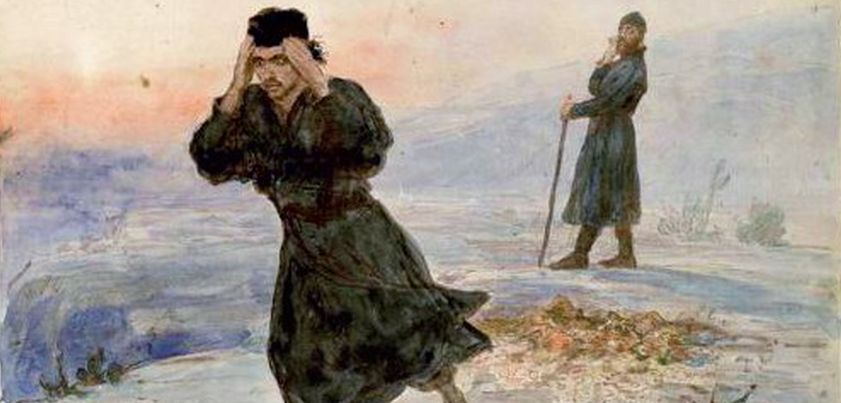 In this story by Leo Tolstoy, two devout brothers who have dedicated their lives to helping the needy react very differently to finding a heap of gold. One leaps aside and runs away; the other takes it into town and puts it towards building and provisioning an asylum for widows and orphans, a hospital for the sick, and a hospice for the poor and pilgrims. Returning home penniless after basking in the praise of the townspeople, he is castigated by an Angel for allowing himself to be corrupted by the devil. Themes include religion, selflessness, brotherly love, temptation, hubris. More…
In this story by Leo Tolstoy, two devout brothers who have dedicated their lives to helping the needy react very differently to finding a heap of gold. One leaps aside and runs away; the other takes it into town and puts it towards building and provisioning an asylum for widows and orphans, a hospital for the sick, and a hospice for the poor and pilgrims. Returning home penniless after basking in the praise of the townspeople, he is castigated by an Angel for allowing himself to be corrupted by the devil. Themes include religion, selflessness, brotherly love, temptation, hubris. More…
The End of the World
 This story by Dino Buzzati is a satire of false piety. The fist of God appears in the sky, signaling the end of the world. Two friars, happy to have been proven right, laugh and make fun of the panicking crowds. The rich buy up the services of most available confessors, while charlatans pretending to be priests do house-calls to hear confessions from those who can afford it. A young priest cornered by a crowd mechanically takes confession after confession, before damning them all to hell for cheating him of his own salvation. Themes include piety, Armageddon, fear, greed, hypocrisy. More…
This story by Dino Buzzati is a satire of false piety. The fist of God appears in the sky, signaling the end of the world. Two friars, happy to have been proven right, laugh and make fun of the panicking crowds. The rich buy up the services of most available confessors, while charlatans pretending to be priests do house-calls to hear confessions from those who can afford it. A young priest cornered by a crowd mechanically takes confession after confession, before damning them all to hell for cheating him of his own salvation. Themes include piety, Armageddon, fear, greed, hypocrisy. More…
The Toxic Donut
 In this story by Terry Bisson, a woman has been nominated from entries all over the world to represent humanity in an annual TV extravaganza. The focus of the show, set in the future and officiated over by world leaders, is Environmental Awareness. One of its features is a “Wonders of Science” film segment celebrating technology that can concentrate a whole year’s toxic wastes and pollutants into a single donut. In the finale, the donut for the previous year is presented to the world. The unwitting woman’s role is to eat it. Themes include environmentalism, science and technology, human sacrifice. More…
In this story by Terry Bisson, a woman has been nominated from entries all over the world to represent humanity in an annual TV extravaganza. The focus of the show, set in the future and officiated over by world leaders, is Environmental Awareness. One of its features is a “Wonders of Science” film segment celebrating technology that can concentrate a whole year’s toxic wastes and pollutants into a single donut. In the finale, the donut for the previous year is presented to the world. The unwitting woman’s role is to eat it. Themes include environmentalism, science and technology, human sacrifice. More…
You Were Perfectly Fine
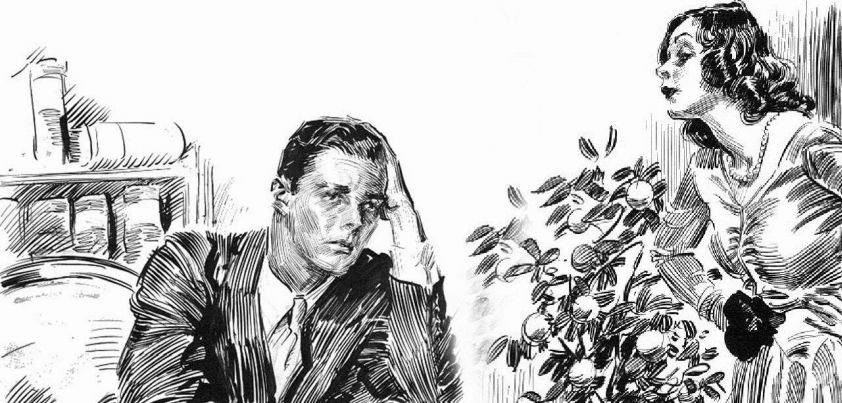 This entertaining “morning after” story by Dorothy Parker describes an embarrassed young man’s reactions as he tries to piece together what happened the night before. The beauty of the story is that, depending on how the reader interprets the dialogue, it can be taken several ways. One is that the woman is exaggerating or even making up events to teach the man a lesson. Another is that the events are true but she is playing them down because she wants to believe something he said during the cab ride home. Themes include alcohol abuse, memory, relationships, guilt, happiness and regret. More…
This entertaining “morning after” story by Dorothy Parker describes an embarrassed young man’s reactions as he tries to piece together what happened the night before. The beauty of the story is that, depending on how the reader interprets the dialogue, it can be taken several ways. One is that the woman is exaggerating or even making up events to teach the man a lesson. Another is that the events are true but she is playing them down because she wants to believe something he said during the cab ride home. Themes include alcohol abuse, memory, relationships, guilt, happiness and regret. More…
Unnecessary Things
 The message of this story by Tatyana Tolstaya is the need to let go of things that are no longer important to your life. The protagonist, who is moving alone into a new apartment, finds the remains of her childhood teddy bear while rummaging through a cupboard in her parents’ house. The find brings back long-suppressed memories and results in a feeling of overwhelming nostalgia. Sleeping next to the bear that night, she decides it has to go. Themes include hoarding, the relationship between objects, memories and feelings, sentimentality, moving on. More…
The message of this story by Tatyana Tolstaya is the need to let go of things that are no longer important to your life. The protagonist, who is moving alone into a new apartment, finds the remains of her childhood teddy bear while rummaging through a cupboard in her parents’ house. The find brings back long-suppressed memories and results in a feeling of overwhelming nostalgia. Sleeping next to the bear that night, she decides it has to go. Themes include hoarding, the relationship between objects, memories and feelings, sentimentality, moving on. More…
What I Have Been Doing Lately
 This circular narrative by Jamaica Kincaid takes the form of a dream in which the narrator, woken by her doorbell and finding no one there, embarks upon a surreal journey. An interesting aspect of the story is that although delivered in the first person, the narrator’s identity is neither given nor defined. When asked the titular question by an unknown woman, she gives a slightly different version of the journey so far, suggesting either personal growth (greater awareness), or that she has experienced multiple iterations of the journey. Themes include reality vs. fantasy, loss and longing, motherhood, personal growth, identity. More…
This circular narrative by Jamaica Kincaid takes the form of a dream in which the narrator, woken by her doorbell and finding no one there, embarks upon a surreal journey. An interesting aspect of the story is that although delivered in the first person, the narrator’s identity is neither given nor defined. When asked the titular question by an unknown woman, she gives a slightly different version of the journey so far, suggesting either personal growth (greater awareness), or that she has experienced multiple iterations of the journey. Themes include reality vs. fantasy, loss and longing, motherhood, personal growth, identity. More…
The Kitemaker
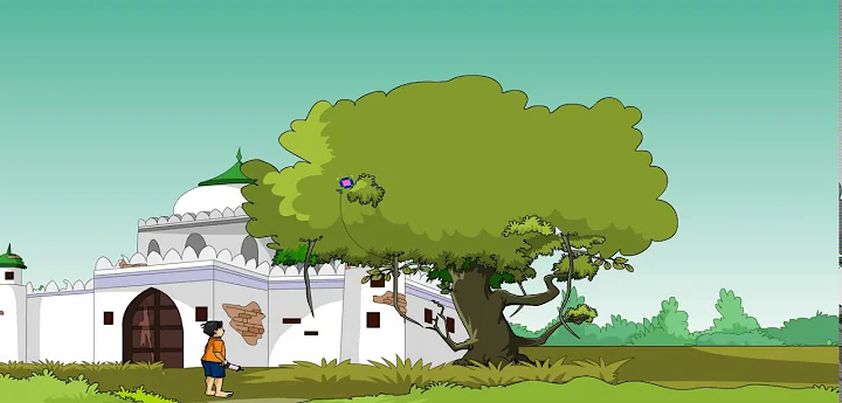 The major themes of this Ruskin Bond story are change and the isolation/loneliness of the aged. An old man in a once rural Indian village lays back and reflects on his life as a professional kitemaker and how much the world has changed. The village’s traditional social structure, sport of adult kite flying, open spaces, and once close community spirit are no more. His only joy in life is spending time with and making kites for his grandson. A torn kite carried by the wind far above the city symbolizes release of his soul. Other themes: tradition, nostalgia, pride, mortality. More…
The major themes of this Ruskin Bond story are change and the isolation/loneliness of the aged. An old man in a once rural Indian village lays back and reflects on his life as a professional kitemaker and how much the world has changed. The village’s traditional social structure, sport of adult kite flying, open spaces, and once close community spirit are no more. His only joy in life is spending time with and making kites for his grandson. A torn kite carried by the wind far above the city symbolizes release of his soul. Other themes: tradition, nostalgia, pride, mortality. More…
I Could See the Smallest Things
 The title of this story by Raymond Carver is somewhat ironic. When protagonist Nancy looks out her bedroom window, she can see the smallest of things. What she can’t see or won’t acknowledge are the big things in her life that need attention. Concern about her open gate and multiple references to fences symbolize three important themes: insecurity, alienation, and fear of the outside world and/or change. Neighbor Sam’s garden pests represent another: inertia (sluggishness). Sam has moved on from his problems in life; Nancy and husband Cliff have not. Other themes: alcohol abuse, regret, emptiness and lack of fulfilment. More…
The title of this story by Raymond Carver is somewhat ironic. When protagonist Nancy looks out her bedroom window, she can see the smallest of things. What she can’t see or won’t acknowledge are the big things in her life that need attention. Concern about her open gate and multiple references to fences symbolize three important themes: insecurity, alienation, and fear of the outside world and/or change. Neighbor Sam’s garden pests represent another: inertia (sluggishness). Sam has moved on from his problems in life; Nancy and husband Cliff have not. Other themes: alcohol abuse, regret, emptiness and lack of fulfilment. More…
The Japanese Quince
 The message of this story by John Galsworthy can be summarized in the English idiom “stop and smell the roses”. The protagonist and his doppelganger neighbor are so caught up in their daily routines that they not only fail to notice the beauty around them, but also lead solitary, unfulfilled lives alienated from those outside their immediate circle. The titular quince, with its refreshing fragrance and colorful blossoms, symbolizes rebirth. The blackbird’s song represents the potential joy of life that eludes them. Themes: the beauty of nature, work/life balance, alienation, lack of fulfillment/inner emptiness, appearance, social anxiety. More…
The message of this story by John Galsworthy can be summarized in the English idiom “stop and smell the roses”. The protagonist and his doppelganger neighbor are so caught up in their daily routines that they not only fail to notice the beauty around them, but also lead solitary, unfulfilled lives alienated from those outside their immediate circle. The titular quince, with its refreshing fragrance and colorful blossoms, symbolizes rebirth. The blackbird’s song represents the potential joy of life that eludes them. Themes: the beauty of nature, work/life balance, alienation, lack of fulfillment/inner emptiness, appearance, social anxiety. More…
The Princess and the Tin Box
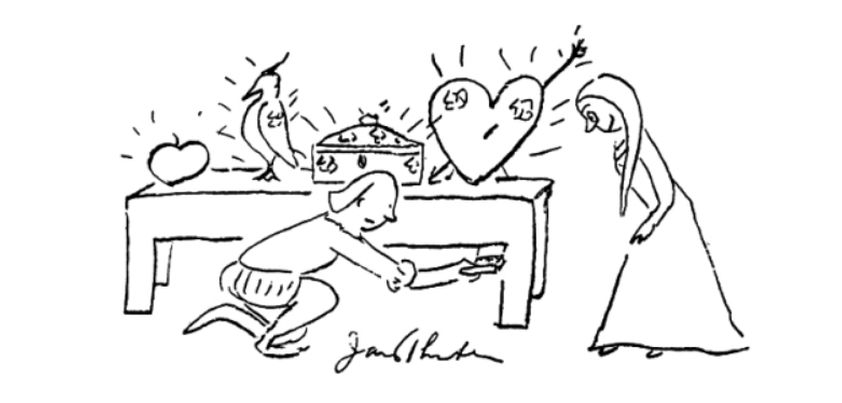 In addition to famous short stories such as The Secret Life of Walter Mitty and The Cat-Bird Seat, humorist James Thurber authored numerous “fables for our time”. Many of these satirize the fable/fairy-tale form and, in so doing, provide commentary on aspects of modern society. In this story, a king decrees that he will give his spoiled daughter’s hand in marriage to the prince who brings her the gift she likes the most. Readers are left wondering whether she makes the right choice. Themes: parental pressure/expectations, materialism vs. romantic love, realistic vs. “fairy tale” endings. More…
In addition to famous short stories such as The Secret Life of Walter Mitty and The Cat-Bird Seat, humorist James Thurber authored numerous “fables for our time”. Many of these satirize the fable/fairy-tale form and, in so doing, provide commentary on aspects of modern society. In this story, a king decrees that he will give his spoiled daughter’s hand in marriage to the prince who brings her the gift she likes the most. Readers are left wondering whether she makes the right choice. Themes: parental pressure/expectations, materialism vs. romantic love, realistic vs. “fairy tale” endings. More…
The Grasshopper and the Bell Cricket
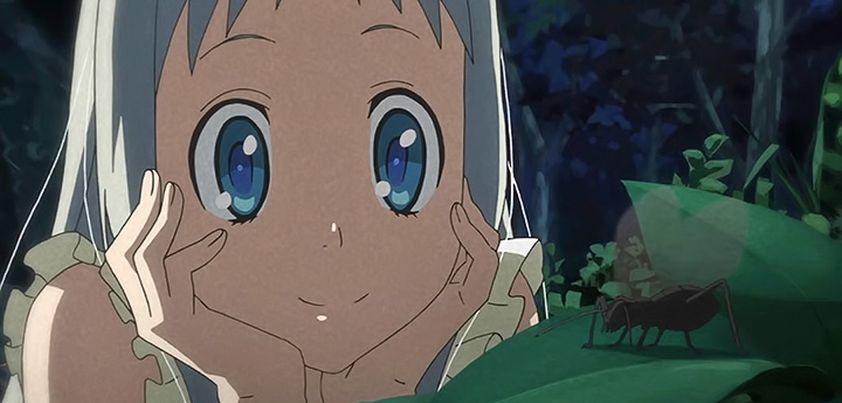 In understanding this story from Yasunari Kawabata, it is important to know that in Japan, grasshoppers are considered common insects whilst bell crickets are highly prized because of each male’s unique cry. In calling out Does anyone want a grasshopper? several times until Kiyoko responds, Fujio signals that he knows which of the two he has caught and who he wants to give it to. To me, the major themes of the story are love and perception: what some may mistake for a grasshopper, others will recognize as a bell cricket (and vice-versa!). Other themes: childhood innocence, individualism, destiny, beauty. More…
In understanding this story from Yasunari Kawabata, it is important to know that in Japan, grasshoppers are considered common insects whilst bell crickets are highly prized because of each male’s unique cry. In calling out Does anyone want a grasshopper? several times until Kiyoko responds, Fujio signals that he knows which of the two he has caught and who he wants to give it to. To me, the major themes of the story are love and perception: what some may mistake for a grasshopper, others will recognize as a bell cricket (and vice-versa!). Other themes: childhood innocence, individualism, destiny, beauty. More…
Four O’clock
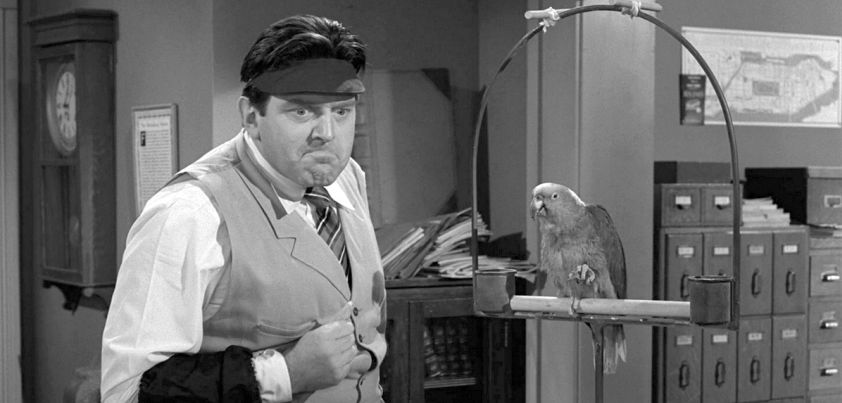 This is the one notable short story from award-winning journalist Price Day. A seemingly ordinary man has been given a series of “special powers” that could benefit mankind. He is too slow in using the first two (the power to ground war planes and prevent road accidents), and is determined not to do the same with the third: the ability to change evil people all over the world in a way that makes them easily identifiable. When he tries to do this, things don’t go according to plan. Themes: moral superiority, tempting fate (be careful what you wish for!), karma. More…
This is the one notable short story from award-winning journalist Price Day. A seemingly ordinary man has been given a series of “special powers” that could benefit mankind. He is too slow in using the first two (the power to ground war planes and prevent road accidents), and is determined not to do the same with the third: the ability to change evil people all over the world in a way that makes them easily identifiable. When he tries to do this, things don’t go according to plan. Themes: moral superiority, tempting fate (be careful what you wish for!), karma. More…
There Was Once
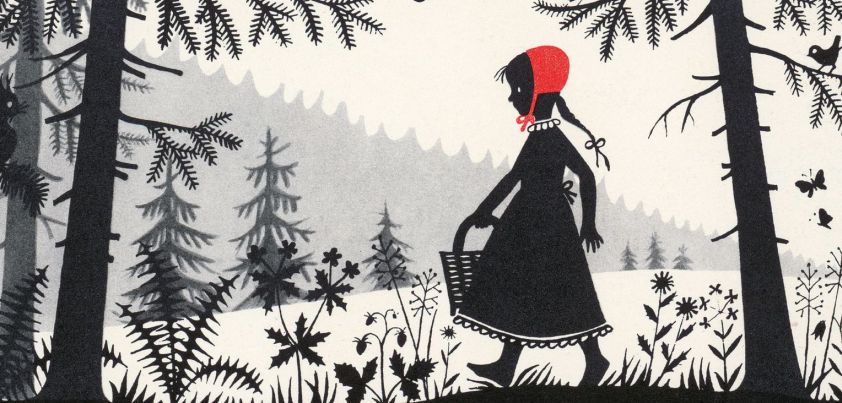 This humorous vignette from Margaret Atwood uses satire to not only highlight the frequent use of stereotypes in children’s stories, but also draw attention to the modern-day obsession with political correctness. A storyteller is humiliated into whittling his twenty-four-word opening sentence down to just one, and then changing it. This illustrates how, taken to extremes, almost anything one says has the potential to offend someone. Atwood’s message is that literature, the performing arts, news reporting and free speech as we know them would be impossible under such constraints. Themes: storytelling, stereotyping, political correctness, freedom of expression. More…
This humorous vignette from Margaret Atwood uses satire to not only highlight the frequent use of stereotypes in children’s stories, but also draw attention to the modern-day obsession with political correctness. A storyteller is humiliated into whittling his twenty-four-word opening sentence down to just one, and then changing it. This illustrates how, taken to extremes, almost anything one says has the potential to offend someone. Atwood’s message is that literature, the performing arts, news reporting and free speech as we know them would be impossible under such constraints. Themes: storytelling, stereotyping, political correctness, freedom of expression. More…
Anxiety
 In this story from Grace Paley’s activist period, an elderly woman worries about everything from the imminent destruction of the world to the well-being of two children being walked home from school. A father’s shortness with one of the children prompts the woman to call him out. She begins with the alarmist suggestion that people should enjoy life less and think more about the coming doom. She then elicits the cause of the man’s anger (wounded pride), which seems petty compared to the issues she has just raised. Themes: anxiety, global threats, fatherhood, child innocence, adult indifference. More…
In this story from Grace Paley’s activist period, an elderly woman worries about everything from the imminent destruction of the world to the well-being of two children being walked home from school. A father’s shortness with one of the children prompts the woman to call him out. She begins with the alarmist suggestion that people should enjoy life less and think more about the coming doom. She then elicits the cause of the man’s anger (wounded pride), which seems petty compared to the issues she has just raised. Themes: anxiety, global threats, fatherhood, child innocence, adult indifference. More…
The Awful Fate of Melpomenus Jones
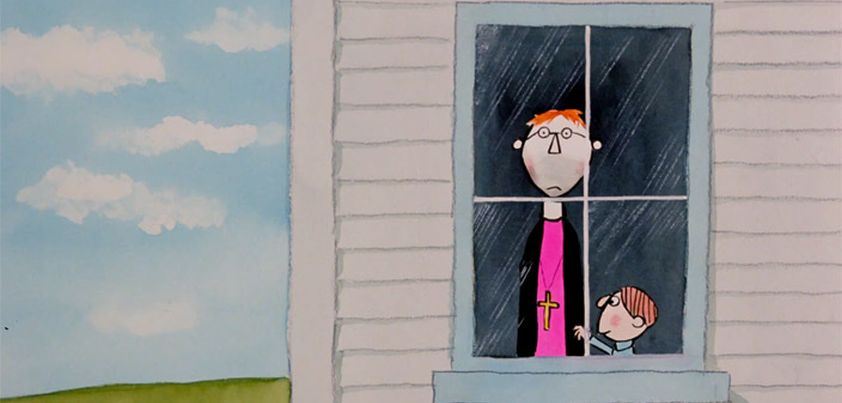 This story by Stephen Leacock takes a sarcastic look at the themes of shyness and polite social conventions. Many readers mistakenly associate Melpomenus’s refusal to give a false reason to leave the house with his being a clergyman. Not so! In the introduction we are told the young curate was too modest (shy) to tell a lie. His downfall is because of shyness, not honesty. However, the absurd outcome is as much the over-polite hosts’ fault as it is Melpomenus’s. If anyone was responsible for his spirit rushing from the house like a hunted cat, it was them. More…
This story by Stephen Leacock takes a sarcastic look at the themes of shyness and polite social conventions. Many readers mistakenly associate Melpomenus’s refusal to give a false reason to leave the house with his being a clergyman. Not so! In the introduction we are told the young curate was too modest (shy) to tell a lie. His downfall is because of shyness, not honesty. However, the absurd outcome is as much the over-polite hosts’ fault as it is Melpomenus’s. If anyone was responsible for his spirit rushing from the house like a hunted cat, it was them. More…
The Boy in the Tunnel / The Boy on the Tünel
 This story by Sait Faik Abasıyanık describes a man’s thoughts as he watches an unkempt boy make his first trip on the Tünel (Istanbul’s Beyoğlu – Karaköy funicular railway). The boy, who is clearly from a poor family, tries hard to supress his feelings of excitement and wonder. His joy turns to discomfort when he senses the man and other passengers taking notice of his faint smile. Themes include 1) how things some of us take for granted can create magic moments for others; and 2) how, as we age, society conditions us to hide our feelings in public. More…
This story by Sait Faik Abasıyanık describes a man’s thoughts as he watches an unkempt boy make his first trip on the Tünel (Istanbul’s Beyoğlu – Karaköy funicular railway). The boy, who is clearly from a poor family, tries hard to supress his feelings of excitement and wonder. His joy turns to discomfort when he senses the man and other passengers taking notice of his faint smile. Themes include 1) how things some of us take for granted can create magic moments for others; and 2) how, as we age, society conditions us to hide our feelings in public. More…
Like the Sun
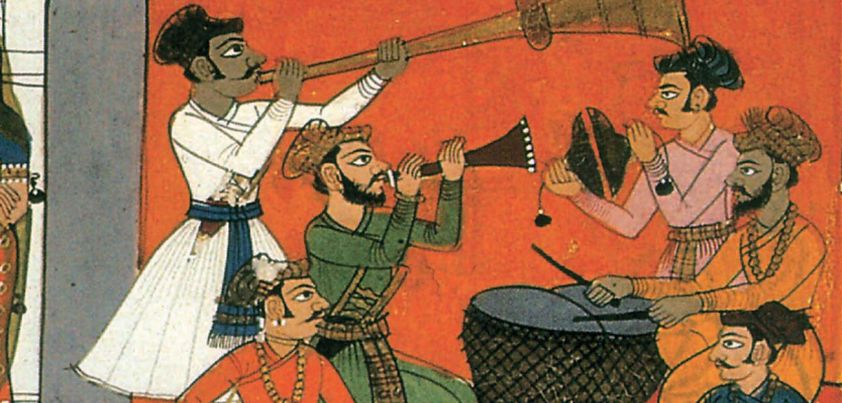 The major theme of this story by R. K. Narayan is the nature and consequences of truth. After observing that relationships involve tempering truth so as not to hurt one another, the protagonist adds that life is not worth living without telling nothing but the truth at least one day each year. On one of these days, his honesty upsets three people. The first two are needlessly hurt; the third, although unhappy, benefits from his frankness. The story shows that truth is indeed like the sun: most of the time warm and nourishing, but also capable of causing serious damage. More…
The major theme of this story by R. K. Narayan is the nature and consequences of truth. After observing that relationships involve tempering truth so as not to hurt one another, the protagonist adds that life is not worth living without telling nothing but the truth at least one day each year. On one of these days, his honesty upsets three people. The first two are needlessly hurt; the third, although unhappy, benefits from his frankness. The story shows that truth is indeed like the sun: most of the time warm and nourishing, but also capable of causing serious damage. More…
Half a Day
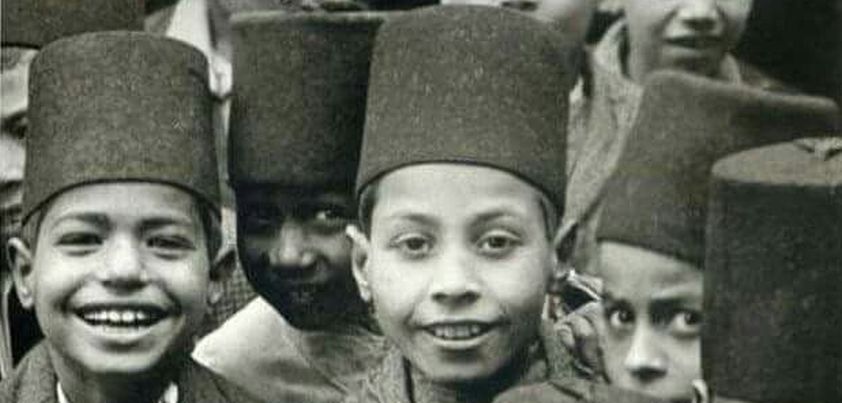 This thought-provoking story from Naguib Mahfouz is an allegory of the phases and brevity of life. An old man’s nostalgic description of his first day at school triggers a stream of associated memories. He recalls completing his schooling and going on to experience friendship and love as if this all took place the same day. He then imagines setting out alone on a mystical journey “home”. Changes in the social and urban environments cause him to lose his way, and he becomes increasingly anxious to reach his destination and seek explanations (enlightenment?) from his “father”. Themes: time, memory, aging, change. More…
This thought-provoking story from Naguib Mahfouz is an allegory of the phases and brevity of life. An old man’s nostalgic description of his first day at school triggers a stream of associated memories. He recalls completing his schooling and going on to experience friendship and love as if this all took place the same day. He then imagines setting out alone on a mystical journey “home”. Changes in the social and urban environments cause him to lose his way, and he becomes increasingly anxious to reach his destination and seek explanations (enlightenment?) from his “father”. Themes: time, memory, aging, change. More…
The War Prayer
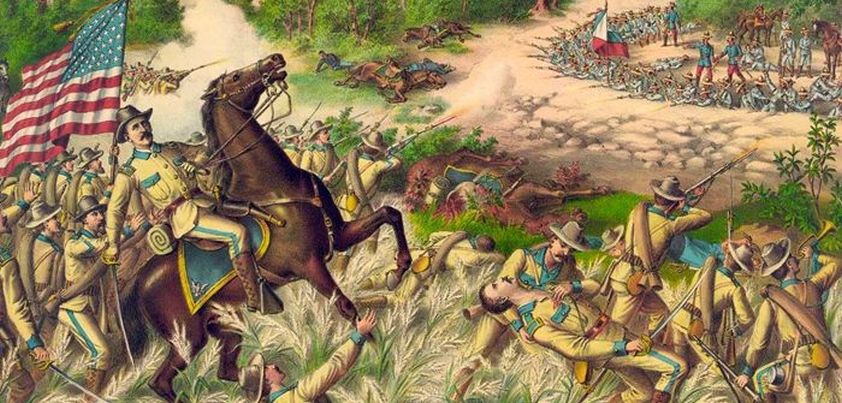 Following Russia’s recent invasion of Ukraine, it seems appropriate to feature one of literature’s most famous “anti-war” stories. Written in 1905, this narrative essay by Samuel Clemens (aka Mark Twain) is a condemnation of the American imperialist agenda that led to the Spanish and Filipino-American Wars. With his usual sarcasm and wit, Twain brushes aside patriotic bravado and poignantly focuses on the suffering of combatants and civilians on both sides. Themes: patriotism, the horrors of war, the connection between the church (religion) and war, the selfish one-sidedness of war prayers vs. the universality of God. More…
Following Russia’s recent invasion of Ukraine, it seems appropriate to feature one of literature’s most famous “anti-war” stories. Written in 1905, this narrative essay by Samuel Clemens (aka Mark Twain) is a condemnation of the American imperialist agenda that led to the Spanish and Filipino-American Wars. With his usual sarcasm and wit, Twain brushes aside patriotic bravado and poignantly focuses on the suffering of combatants and civilians on both sides. Themes: patriotism, the horrors of war, the connection between the church (religion) and war, the selfish one-sidedness of war prayers vs. the universality of God. More…
Death by Scrabble
 You know that a story which begins It’s a hot day and I hate my wife is not going to end well for one of them. In this story by Charlie Fish, a bored couple sit down for a “friendly” game of scrabble. As the competition intensifies, the man notices something strange. The words the couple put down on the board seem to be coming true in the room around them. To test the theory, he puts down the letters Q-U-A-K-E. As the ground begins to shake, he realizes too late that his wife has made the same discovery. More…
You know that a story which begins It’s a hot day and I hate my wife is not going to end well for one of them. In this story by Charlie Fish, a bored couple sit down for a “friendly” game of scrabble. As the competition intensifies, the man notices something strange. The words the couple put down on the board seem to be coming true in the room around them. To test the theory, he puts down the letters Q-U-A-K-E. As the ground begins to shake, he realizes too late that his wife has made the same discovery. More…
Outside
 Etgar Keret’s Outside was published in July, 2020, just over six months into the Covid-19 epidemic. Eighteen months later, we are now into our third wave of the disease. The story is a humorous account of the effects of being locked-down at home. The experience so traumatizes the protagonist that, along with thousands of others, he refuses to leave home when things improve. Forced outside by the army, he struggles to remember where to go and what to do. Fortunately, a chance encounter on the way to an ATM triggers a conditioned response that immediately brings him back to normal. More…
Etgar Keret’s Outside was published in July, 2020, just over six months into the Covid-19 epidemic. Eighteen months later, we are now into our third wave of the disease. The story is a humorous account of the effects of being locked-down at home. The experience so traumatizes the protagonist that, along with thousands of others, he refuses to leave home when things improve. Forced outside by the army, he struggles to remember where to go and what to do. Fortunately, a chance encounter on the way to an ATM triggers a conditioned response that immediately brings him back to normal. More…
My Friend Luke
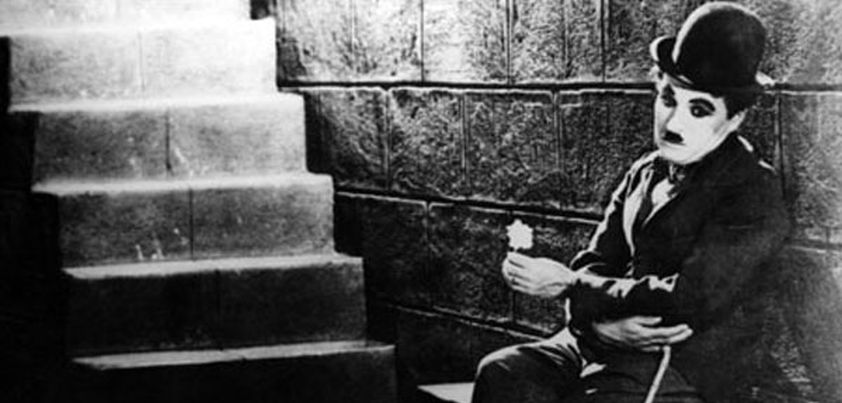 Fernando Sorrentino’s diminutive “friend” Luke is a man of extremes. For the most part he is introverted, considerate and submissive. However, but put Luke on a bus and he becomes assertive, rude and manipulative. The catalyst for this changed behaviour is the tolerance of the other bus passengers, built up over years of coping with a crowded public transport system. The story is a metaphor for the desire of all people living subservient, unsatisfying, exploited lives to lash out and assert their individuality. Themes: lack of fulfilment, loneliness, exploitation, frustration, rebellion. More…
Fernando Sorrentino’s diminutive “friend” Luke is a man of extremes. For the most part he is introverted, considerate and submissive. However, but put Luke on a bus and he becomes assertive, rude and manipulative. The catalyst for this changed behaviour is the tolerance of the other bus passengers, built up over years of coping with a crowded public transport system. The story is a metaphor for the desire of all people living subservient, unsatisfying, exploited lives to lash out and assert their individuality. Themes: lack of fulfilment, loneliness, exploitation, frustration, rebellion. More…
Filboid Studge
 This story is from Saki is a spoof on modern advertising. A businessman who had invested all his money into a failed breakfast food requests help from an impoverished artist who wants to marry his daughter. The artist gives the product an unappetising name and promotes it with a poster of celebrities in Hell clamouring for the unpalatable dish “they cannot buy now”. Sales take off, and the businessman sells the company and marries his daughter to someone a “vast deal higher” than the hapless artist. Themes include despair, the power of advertising, branding (appeal to duty/guilt), social class, ingratitude/betrayal. More…
This story is from Saki is a spoof on modern advertising. A businessman who had invested all his money into a failed breakfast food requests help from an impoverished artist who wants to marry his daughter. The artist gives the product an unappetising name and promotes it with a poster of celebrities in Hell clamouring for the unpalatable dish “they cannot buy now”. Sales take off, and the businessman sells the company and marries his daughter to someone a “vast deal higher” than the hapless artist. Themes include despair, the power of advertising, branding (appeal to duty/guilt), social class, ingratitude/betrayal. More…
The Oval Portrait
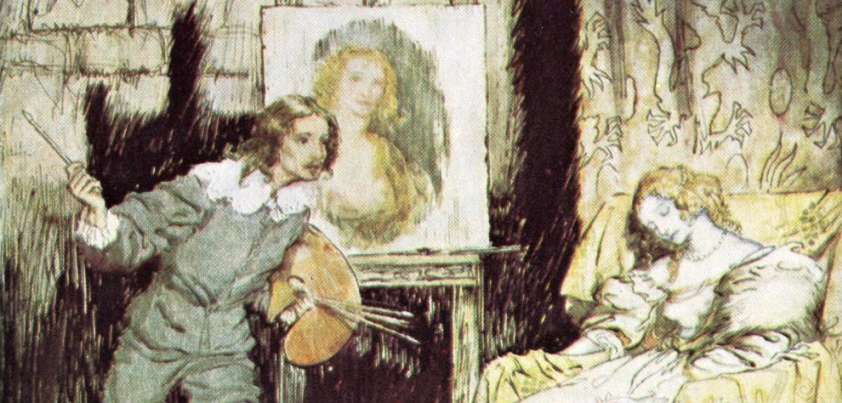 This Edgar Allan Poe story demonstrates the sinister side of how beauty can live on through art. An injured traveler takes shelter in an empty mountain chateau. There are paintings on and around the walls of his room. On his pillow is a book describing them. His eyes fall on the portrait of a beautiful woman that seems a little too lifelike. Disturbed, he finds its entry in the book. The woman’s story suggests that although art can preserve beauty, artistic obsession can destroy it in the making. Themes include art and artistry, rare beauty, love, obedience, obsession and death. More…
This Edgar Allan Poe story demonstrates the sinister side of how beauty can live on through art. An injured traveler takes shelter in an empty mountain chateau. There are paintings on and around the walls of his room. On his pillow is a book describing them. His eyes fall on the portrait of a beautiful woman that seems a little too lifelike. Disturbed, he finds its entry in the book. The woman’s story suggests that although art can preserve beauty, artistic obsession can destroy it in the making. Themes include art and artistry, rare beauty, love, obedience, obsession and death. More…
The Egg
 Andy Weir’s The Egg is so thought provoking that I have re-read it several times over the years. The story comprises a conversation between “god” and a dead man about the meaning and purpose of life (to grow his soul through new experiences), and his place in the universe. Other themes (equality, consideration for others, and empathy) are nicely summed up in the paragraph: Every time you victimized someone, you were victimizing yourself. Every act of kindness you’ve done, you’ve done to yourself. Every happy and sad moment ever experienced by any human was, or will be, experienced by you. More…
Andy Weir’s The Egg is so thought provoking that I have re-read it several times over the years. The story comprises a conversation between “god” and a dead man about the meaning and purpose of life (to grow his soul through new experiences), and his place in the universe. Other themes (equality, consideration for others, and empathy) are nicely summed up in the paragraph: Every time you victimized someone, you were victimizing yourself. Every act of kindness you’ve done, you’ve done to yourself. Every happy and sad moment ever experienced by any human was, or will be, experienced by you. More…
The Verb to Kill
 In this story by Luisa Valenzuela, a pubescent girl in an isolated seaside community spends a lot of time fantasizing with her sister over the imaginary depraved, murderous activities of a seemingly harmless recluse living nearby. The additional conjugations of “to kill” at the end of the story suggest the girls may have taken matters into their own hands. A major theme is the danger of judging someone based on their looks or eccentric behaviour. Other themes include gender inequality and violence in society, imagination, egocentrism, paranoia, dehumanization (of both the man and their “friend” Pocha), superstition. More…
In this story by Luisa Valenzuela, a pubescent girl in an isolated seaside community spends a lot of time fantasizing with her sister over the imaginary depraved, murderous activities of a seemingly harmless recluse living nearby. The additional conjugations of “to kill” at the end of the story suggest the girls may have taken matters into their own hands. A major theme is the danger of judging someone based on their looks or eccentric behaviour. Other themes include gender inequality and violence in society, imagination, egocentrism, paranoia, dehumanization (of both the man and their “friend” Pocha), superstition. More…
The Baby (The First Thing the Baby Did Wrong)
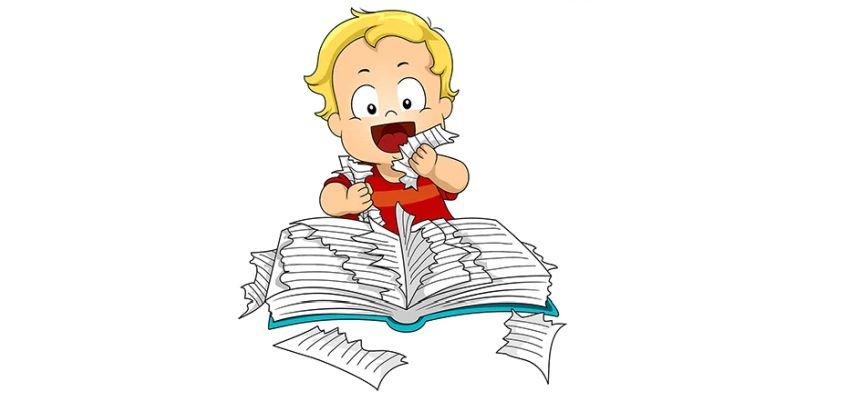 This story by Donald Barthelme may be confronting for some readers because it appears to make light of an example of child abuse. Through exaggeration and humor, Barthelme leads us to his central theme: the coming of a baby can change the whole dynamics of family relationships. Most parents like to think that they are the ones in control. However, all too often they find themselves dancing to their child’s tune. By the end of the story, this baby has totally turned the tables. Some might even say that it has been guilty of a form of parental abuse! More…
This story by Donald Barthelme may be confronting for some readers because it appears to make light of an example of child abuse. Through exaggeration and humor, Barthelme leads us to his central theme: the coming of a baby can change the whole dynamics of family relationships. Most parents like to think that they are the ones in control. However, all too often they find themselves dancing to their child’s tune. By the end of the story, this baby has totally turned the tables. Some might even say that it has been guilty of a form of parental abuse! More…
An Uncomfortable Bed
 In this story by Guy de Moupassant, a man on a hunting holiday stays in a large country house with a group of friends. They, and the protagonist, enjoy playing practical jokes on one another. When he arrives, the others seem much more jovial than usual. He is suspicious and, when they all go to bed, takes great care to make sure his room contains no traps. He doesn’t find any, but his friends still have a good laugh at his expense the next day. Themes include camaraderie, appearances vs. reality, suspicion, paranoia, embarrassment. More…
In this story by Guy de Moupassant, a man on a hunting holiday stays in a large country house with a group of friends. They, and the protagonist, enjoy playing practical jokes on one another. When he arrives, the others seem much more jovial than usual. He is suspicious and, when they all go to bed, takes great care to make sure his room contains no traps. He doesn’t find any, but his friends still have a good laugh at his expense the next day. Themes include camaraderie, appearances vs. reality, suspicion, paranoia, embarrassment. More…
Baby H.P.
 This satirical “story” by Juan José Arreola is in the form of an advertisement targeting 1940s housewives. It promotes a light metal exoskeleton which, when attached to a child’s body by means of comfortable belts, bracelets, rings, and brooches, transforms the energy of its movements into stored electricity. The story can be looked at on several levels: as a critique of the emerging consumer society (increasing use of household gadgets); as an attack on commercialism (impacting children’s lives for profit); and as a warning of the potential dehumanizing effects of technology. Themes include absurdity, consumerism, child exploitation, misuse of technology. More…
This satirical “story” by Juan José Arreola is in the form of an advertisement targeting 1940s housewives. It promotes a light metal exoskeleton which, when attached to a child’s body by means of comfortable belts, bracelets, rings, and brooches, transforms the energy of its movements into stored electricity. The story can be looked at on several levels: as a critique of the emerging consumer society (increasing use of household gadgets); as an attack on commercialism (impacting children’s lives for profit); and as a warning of the potential dehumanizing effects of technology. Themes include absurdity, consumerism, child exploitation, misuse of technology. More…
Barcelona
 This story by Alice Adams deals with themes of fear, preparedness, pride, gender expectations and poverty. As a wealthy-looking American couple walk through the darkened streets of Barcelona, a thief grabs the woman’s purse and flees. The husband gives chase and recovers it, but appears strangely disappointed when his wife tells him that she always carries her money in her pocket and the bag contains nothing of value. The wife reflects on how men are always “chasing something” to prove their self-worth, and feels sorry for the plight of the poor who must steal to do so. More…
This story by Alice Adams deals with themes of fear, preparedness, pride, gender expectations and poverty. As a wealthy-looking American couple walk through the darkened streets of Barcelona, a thief grabs the woman’s purse and flees. The husband gives chase and recovers it, but appears strangely disappointed when his wife tells him that she always carries her money in her pocket and the bag contains nothing of value. The wife reflects on how men are always “chasing something” to prove their self-worth, and feels sorry for the plight of the poor who must steal to do so. More…
Hearts and Hands
 As with many O. Henry stories, in Hearts and Hands things may not be as they first seem. An attractive, refined-looking young woman is returning East by train after spending time in the ‘Wild West’. She greets a handsome young man she knows, only to see that he is handcuffed to a roughly dressed, glum-faced companion. One of the men is a marshal, the other a criminal being escorted to prison for counterfeiting. Themes include understanding and compassion, deception, appearance vs. reality (beware of judging people by appearances), crime and justice, the lure of the West. More…
As with many O. Henry stories, in Hearts and Hands things may not be as they first seem. An attractive, refined-looking young woman is returning East by train after spending time in the ‘Wild West’. She greets a handsome young man she knows, only to see that he is handcuffed to a roughly dressed, glum-faced companion. One of the men is a marshal, the other a criminal being escorted to prison for counterfeiting. Themes include understanding and compassion, deception, appearance vs. reality (beware of judging people by appearances), crime and justice, the lure of the West. More…
Bread
 This story by Margaret Atwood begins with four passages in which bread is used as a metaphor to illustrate a range of themes. In the first, it’s the good life (plenty and relaxation). In the second, famine (choices and consequences). In the third, life and death (betrayal or sacrifice). And in the fourth, social inequality and greed. The story concludes with a passage about a floating loaf of bread we know is real but are afraid to touch. The inference here is that most unaffected people prefer to turn a blind eye to the starvation and suffering in the world. More…
This story by Margaret Atwood begins with four passages in which bread is used as a metaphor to illustrate a range of themes. In the first, it’s the good life (plenty and relaxation). In the second, famine (choices and consequences). In the third, life and death (betrayal or sacrifice). And in the fourth, social inequality and greed. The story concludes with a passage about a floating loaf of bread we know is real but are afraid to touch. The inference here is that most unaffected people prefer to turn a blind eye to the starvation and suffering in the world. More…
At Dead Dingo
 This story by Australian poet and writer Henry Lawson takes place in an outback pub one hot New Year’s Day. There are four people in the pub: the girl behind the bar, two customers playing cards, and another on a sofa sleeping off a hangover. When one of the card players loses all his money, he bets what he says is his sheepdog. Shortly after the card players leave, the other man wakes. He asks about his dog and threatens to go to the police unless the hotel pays him in some way. Question: Who really owned the dog? More…
This story by Australian poet and writer Henry Lawson takes place in an outback pub one hot New Year’s Day. There are four people in the pub: the girl behind the bar, two customers playing cards, and another on a sofa sleeping off a hangover. When one of the card players loses all his money, he bets what he says is his sheepdog. Shortly after the card players leave, the other man wakes. He asks about his dog and threatens to go to the police unless the hotel pays him in some way. Question: Who really owned the dog? More…
One of These Days
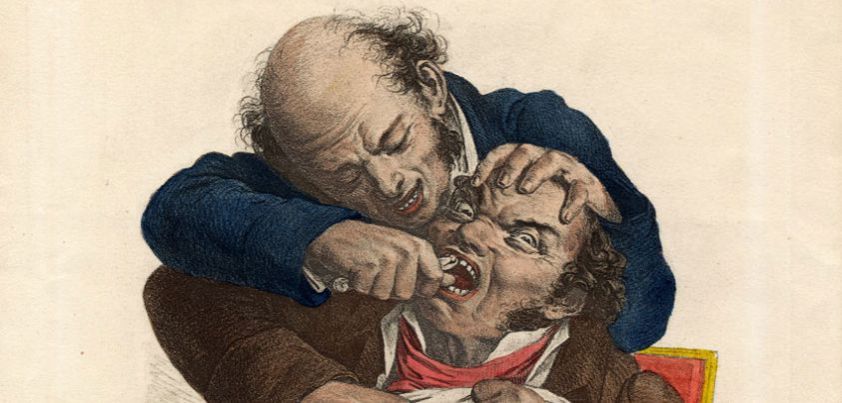 In this story by Gabriel Garcia Marquez, a corrupt Mayor approaches a dentist to treat an abscessed tooth. The dentist does not want to help, but knows he will be killed if he refuses. The dentist has a revolver in a drawer next to his chair. Once the Mayor is in the chair, the dentist has him at his mercy. In a quiet but serious voice, he says to the Mayor: “Now you’ll pay for our twenty dead men.” The dentist has decided what has to be done… does he pull the trigger, or pull the tooth? More…
In this story by Gabriel Garcia Marquez, a corrupt Mayor approaches a dentist to treat an abscessed tooth. The dentist does not want to help, but knows he will be killed if he refuses. The dentist has a revolver in a drawer next to his chair. Once the Mayor is in the chair, the dentist has him at his mercy. In a quiet but serious voice, he says to the Mayor: “Now you’ll pay for our twenty dead men.” The dentist has decided what has to be done… does he pull the trigger, or pull the tooth? More…
The Continuity of Parks
 Julio Cortázar‘s The Continuity of Parks is unusual in that it is a “story within a story” in which the two stories come together. The title stems from the fact that part of the setting of both stories is the same park at the same time. A tired businessman relaxes with a book. He becomes absorbed in the story (a murder mystery), unaware that the “hero” and “heroine” featured in the book are nearby preparing for the murder he is reading about, and that he is the intended victim! Themes include escape, betrayal, murder, the continuity between fiction and reality. More…
Julio Cortázar‘s The Continuity of Parks is unusual in that it is a “story within a story” in which the two stories come together. The title stems from the fact that part of the setting of both stories is the same park at the same time. A tired businessman relaxes with a book. He becomes absorbed in the story (a murder mystery), unaware that the “hero” and “heroine” featured in the book are nearby preparing for the murder he is reading about, and that he is the intended victim! Themes include escape, betrayal, murder, the continuity between fiction and reality. More…
The Eyes Have It
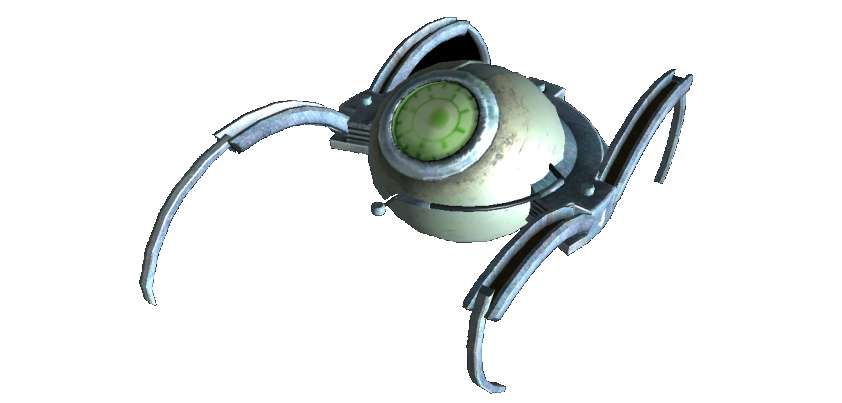 This story by Philip Dick takes a satirical look at the clichéd use of English idioms in popular fiction. Best known as a science fiction writer, Dick makes his point through the eyes of a man who believes he has stumbled upon an invasion of Earth by alien lifeforms that are so highly developed they can shed body parts at will. His story could cause major problems if more people were aware of it. In an age where it takes very little to set off a conspiracy theory, many people could ‘lose their mind’ wondering if it is true. More…
This story by Philip Dick takes a satirical look at the clichéd use of English idioms in popular fiction. Best known as a science fiction writer, Dick makes his point through the eyes of a man who believes he has stumbled upon an invasion of Earth by alien lifeforms that are so highly developed they can shed body parts at will. His story could cause major problems if more people were aware of it. In an age where it takes very little to set off a conspiracy theory, many people could ‘lose their mind’ wondering if it is true. More…
Reunion
 John Cheever’s Reunion is about a boy (Charlie) who reaches out to meet his estranged father, only to learn that the man is a rude, possibly alcoholic attention-seeker who delights in putting other people down. Before the meeting, Charlie was curious to see what his father was like: he was my father, my flesh and blood, my future and my doom. I knew that when I was grown I would be something like him. In cutting the reunion short, Charlie shows that he has the power to defy nature and avoid following in his father’s footsteps. More…
John Cheever’s Reunion is about a boy (Charlie) who reaches out to meet his estranged father, only to learn that the man is a rude, possibly alcoholic attention-seeker who delights in putting other people down. Before the meeting, Charlie was curious to see what his father was like: he was my father, my flesh and blood, my future and my doom. I knew that when I was grown I would be something like him. In cutting the reunion short, Charlie shows that he has the power to defy nature and avoid following in his father’s footsteps. More…
Everyone Cried
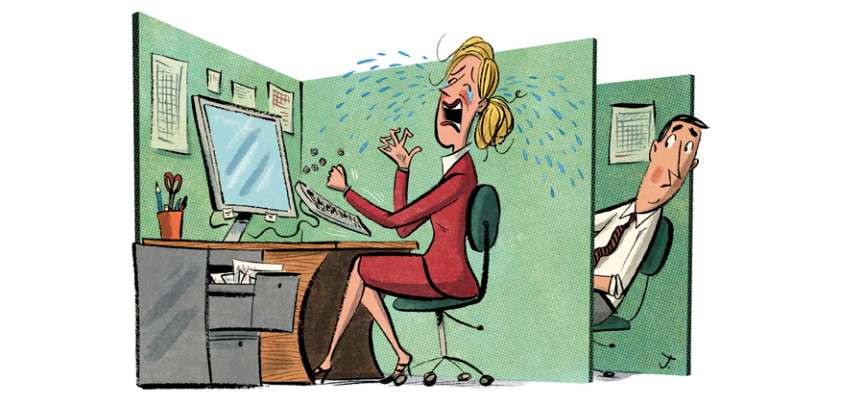 This story from Lydia Davis is sad enough to make you want to cry. It paints a bleak picture of how our lives are dominated by the little things that go wrong, and how these can lead to depression and tears. Some respite may come at the end of the day, but only if things are going well at home. Most of the story is told in the past tense, about a time when I was young. Does this imply that as we get older we become so accustomed to these daily frustrations that they don’t bother us as much? More…
This story from Lydia Davis is sad enough to make you want to cry. It paints a bleak picture of how our lives are dominated by the little things that go wrong, and how these can lead to depression and tears. Some respite may come at the end of the day, but only if things are going well at home. Most of the story is told in the past tense, about a time when I was young. Does this imply that as we get older we become so accustomed to these daily frustrations that they don’t bother us as much? More…
Dead Men’s Path
 The major theme of this story by Chinua Achebe is cultural clash, as reflected in the reformist zeal of a new headmaster who objects to local villagers walking through school grounds to access a path that is important to their animist beliefs. Set in a rural Nigerian mission school, the story takes place in 1949 when the country was still under British rule. It is ironic that, being Nigerian, the young headmaster failed to grasp the seriousness of the villagers’ concerns, whereas his “white Supervisor” seems to immediately understand the situation. Other themes include colonialism, tradition, superstition, pride, arrogance, retribution. More…
The major theme of this story by Chinua Achebe is cultural clash, as reflected in the reformist zeal of a new headmaster who objects to local villagers walking through school grounds to access a path that is important to their animist beliefs. Set in a rural Nigerian mission school, the story takes place in 1949 when the country was still under British rule. It is ironic that, being Nigerian, the young headmaster failed to grasp the seriousness of the villagers’ concerns, whereas his “white Supervisor” seems to immediately understand the situation. Other themes include colonialism, tradition, superstition, pride, arrogance, retribution. More…
The First Law
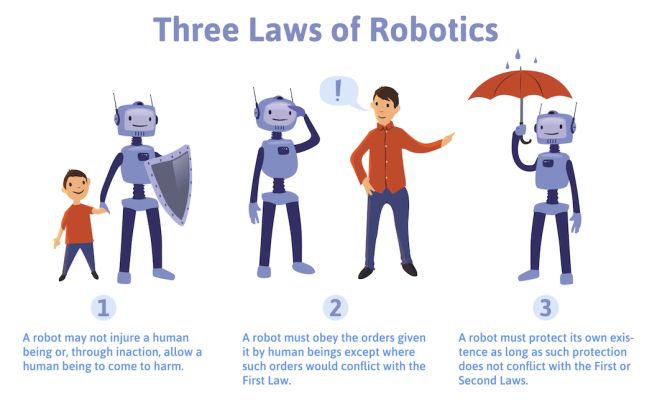 In this story by Isaac Asimov, a scientist tells astounded colleagues a “tall tale” about how a new model robot broke the first and most fundamental of the Three Laws of Robotics: a robot may not injure a human being, or through inaction allow a human being to come to harm. The malfunctioning robot had escaped from its base and, upon encountering the man in a deadly zero-visibility storm, left him to die. Although the robot had a legitimate reason for its actions, the model was discontinued immediately. Themes include disobedience, protectiveness and “motherly” love. More…
In this story by Isaac Asimov, a scientist tells astounded colleagues a “tall tale” about how a new model robot broke the first and most fundamental of the Three Laws of Robotics: a robot may not injure a human being, or through inaction allow a human being to come to harm. The malfunctioning robot had escaped from its base and, upon encountering the man in a deadly zero-visibility storm, left him to die. Although the robot had a legitimate reason for its actions, the model was discontinued immediately. Themes include disobedience, protectiveness and “motherly” love. More…
Christmas Day in the Morning
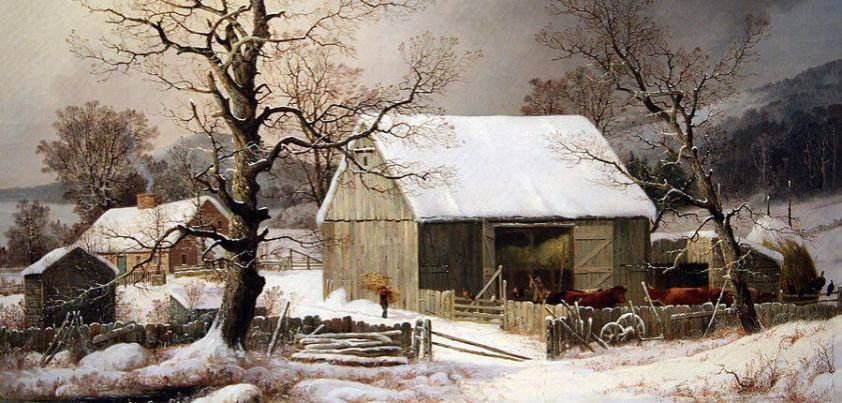 This coming of age story by Pearl S. Buck tells how doing something special to show how much you love someone can be the greatest gift of all. An old man wakes early one Christmas morning and remembers another Christmas when, as a boy, he first understood how much his father loved him. He decided that the cheap tie he had bought was not good enough, and came up with another gift they both remember for the rest of their lives. He realizes that love alone awakens love and decides to give the gift again. Themes: nostalgia, love, family, giving. More…
This coming of age story by Pearl S. Buck tells how doing something special to show how much you love someone can be the greatest gift of all. An old man wakes early one Christmas morning and remembers another Christmas when, as a boy, he first understood how much his father loved him. He decided that the cheap tie he had bought was not good enough, and came up with another gift they both remember for the rest of their lives. He realizes that love alone awakens love and decides to give the gift again. Themes: nostalgia, love, family, giving. More…